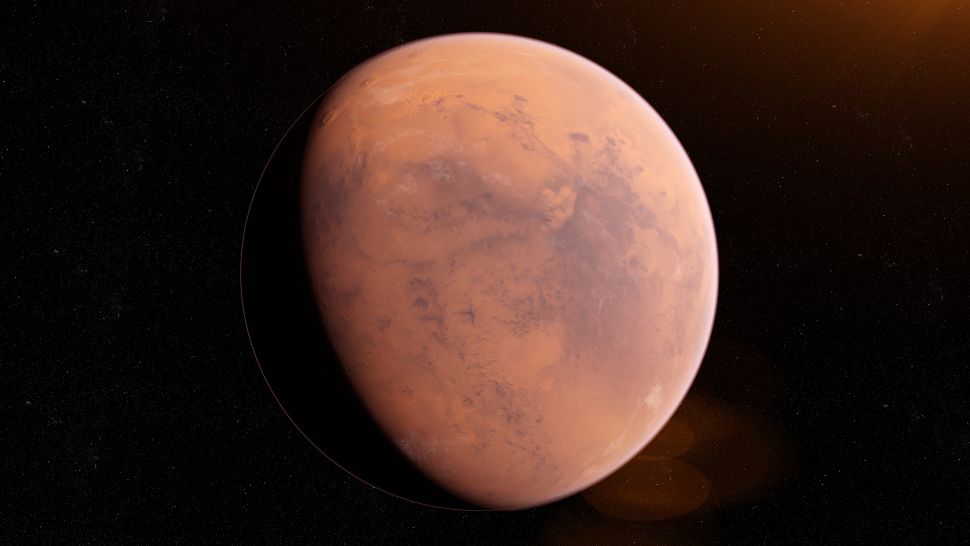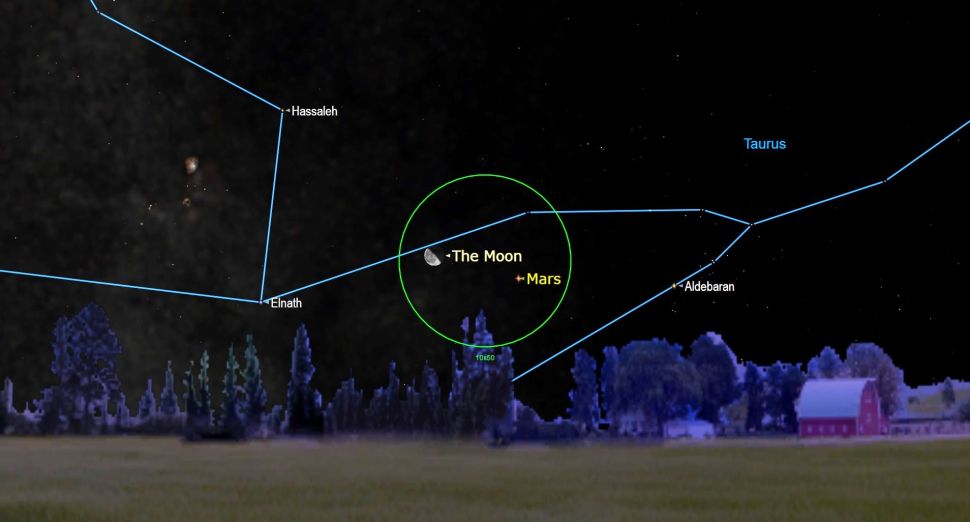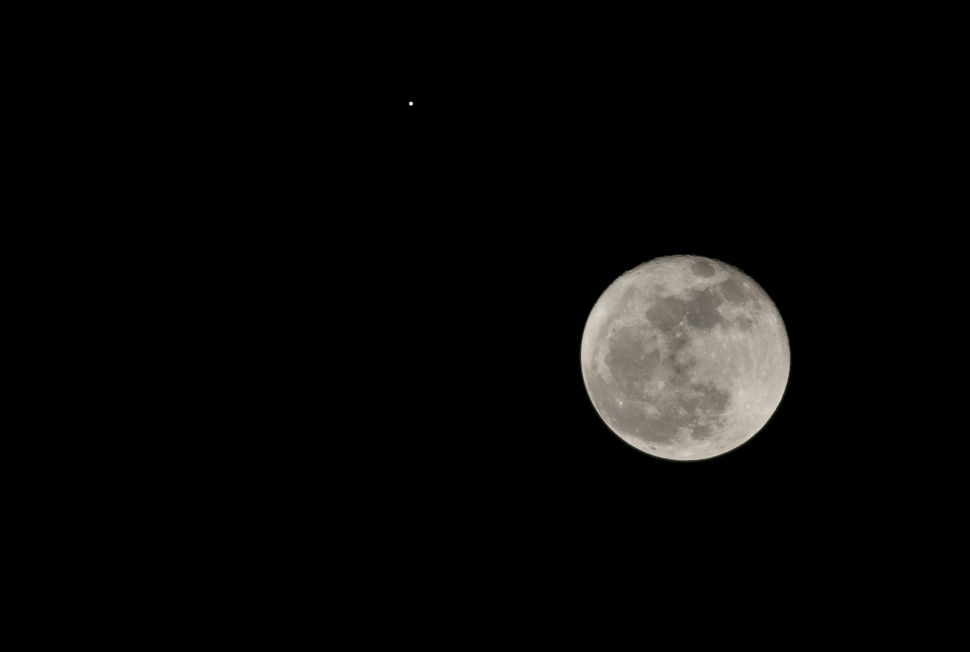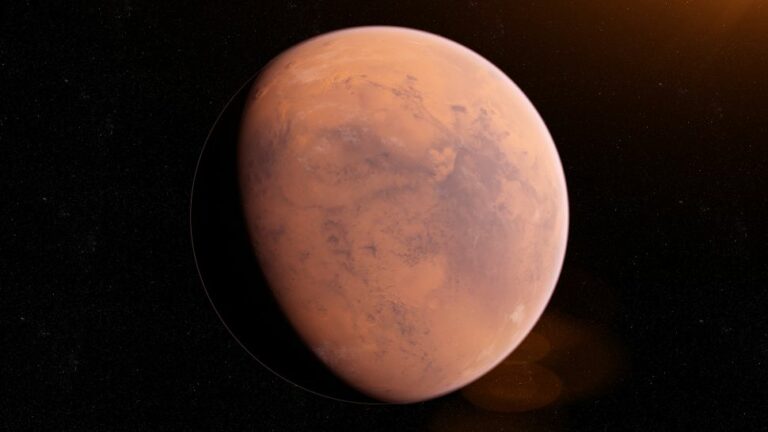Mars is on its way! Our greatest glimpse of the Red Planet won’t come until 2031.
Mars is coming, and if you have a telescope, you’ll want to make the most of this opportunity in the coming months.
If you have a telescope, take advantage of this chance in the upcoming months to observe Mars, which will soon be visible. You won’t have another chance this wonderful for a very long time.

And it is unquestionably true that Mars, the only planet whose surface we can see in any detail from Earth, is currently en route to the position that will provide us the clearest view of it until the year 2031. Observers of the assiduous planets have already started setting up their telescopes.
Even though you’ll have to wait until after midnight to see it well, it will be well worth looking for this week if you haven’t before.
This week, Mars will rise at about 10:30 p.m. local daylight time as it is now halfway between the horns of the zodiacal constellation Taurus, the Bull. Once it crosses the east-northeast horizon, it is impossible to miss. The 21 brightest stars now include Sirius, Canopus, and Mars, which is currently blazing like a dazzling pumpkin-hued light of magnitude -0.4. (The brightness of an object in the sky increases with decreasing magnitude.)
However, Mars will only become brighter as it gets closer to Earth in the following weeks and months; by Nov. 11, it will surpass Sirius as the brightest star in the sky and rank as the fourth brightest object in the night sky, behind the moon, Venus, and Jupiter.
Mars will rise above the east-northeast horizon late on Friday night (Sept. 16) to early on Saturday morning (Sept. 17), hovering around 3.5 degrees to the right and slightly below a waning gibbous moon (your clinched fist held at arm’s length is approximately 10 degrees in breadth). You will be able to observe that the Red Planet actually has more of a yellow-orange hue, making it look more like a desert under a bright sun.

How close?
We don’t often get a decent, up-close view of Mars. It is a tiny world, roughly half the size of Earth and just slightly larger than our moon. And the majority of the time, it is distant from us on the opposite side of its orbit. The majority of people will want to view Mars when I show them the sky via my telescope outside if the moon is not visible, according to my extensive expertise in public outreach.
However, Mars, which typically appears as nothing more than a small, featureless orange blob, ranks as one of the most disappointing telescopic objects. About every 26 months, when Earth approaches Mars and our smaller, faster orbit “overtakes” Mars around the sun, we have a real chance of seeing its surface markings, polar caps, clouds, and potential dust storms.
Because Mars is diametrically opposed to the sun in the sky and rises as the sun sets, we refer to these as oppositions. It rises in the middle of the night, reaches its peak, and sets as the sun is just starting to rise. Mars opposes the Sun every little over two years, but not every opposition is equal. Some near encounters between Mars and Earth are considerably closer than others because both planets’ orbits are moderately elliptical. The absolute finest occur in groups of two or three and reoccur in cycles that last an average of 15 to 17 years.
Currently, that cycle is on its downfall. Mars unexpectedly approached Earth in July 2018 at a distance of 35.78 million miles (57.58 million km), and again in October 2020 at a distance of 38.57 million miles (62.06 million km). Mars will be closest to Earth this time on the evening of November 30. (at around 9:17 p.m. Eastern Standard Time). From center to center, the planet will then be located 50.61 million miles (81.43 million kilometers) away from Earth. Eight days later, on December 8, Mars will make its closest approach to the sun.

On November 30, Mars will be at its closest to Earth and its apparent disk diameter will be 17.2 arc seconds. If you have a telescope, wait until after 8 p.m. this week to look at silvery white Jupiter, glowing brilliantly low in the eastern sky; it will appear to be nearly 50 arc seconds wide. This will give you a sense of exactly how big this is.
At Mars’ closest approach to Earth later this year, however, the Red Planet’s disk will appear to be just about one-third as large as Jupiter’s. Even while it might seem little, this is actually unusually enormous for Mars. In fact, Mars’ apparent size will be greater from November 21 to December 10 than it would be at any other time until May 2031.
A big, high-quality refracting telescope or a huge, long-focus reflecting telescope is the ideal instrument for planetary studies. You may still conduct worthwhile research with practically any respectable telescope, though. The atmospheric stability, which may vary hour to hour and significantly alter image quality, is typically the limiting element in any situation.
Both casual and serious viewers will find obstacles and, with any chance, pleasures on Mars. On a night with superb stable air, you might be able to catch a glimpse of the north polar cap, dark surface features, clouds, and dust activities using a high-quality 4- or 6-inch (10 or 15 centimeter) telescope. The disk of Mars will appear to have the same angular size as the moon has when viewed through an eyepiece magnifying 105 times.
The first time you see a marking, it could simply be momentary. However, during the course of the subsequent nights, as you become accustomed to its look, you’ll be able to spot it right away and perhaps notice nuances that were once invisible to you. Remember this:
You’ll notice more the more you look.
Size isn’t everything
Mars is already blazing brilliantly in our late-night sky, as we mentioned at the beginning, enticing onlookers to see what they can see. By midnight on November 7, you may see the planet high in the east-southeast sky. It will be an early-evening object in the months following its opposition on December 8 as it moves farther away.
Therefore, Mars will really soar in the night sky, almost as if to make up for its comparatively tiny seeming size. In reality, throughout the observing season this year, Mars is visible in Taurus, just above Orion, at the northernmost point of the ecliptic. This implies that for watchers at mid-northern latitudes, it passes extremely far overhead every night, well beyond the dense air layers and poor atmospheric viewing that bothered northern observers during its very near visit by the Earth in the summer of 2018.
December 7: M&M Night
Finally, be sure you mark Wednesday, December 7th, in a large circle on your calendar. The full moon will pass extremely near to Mars during the evening hours, effectively blocking it out for portions of North America (a phenomenon known as an occultation), and undoubtedly prompting the query, “What is that bright yellow-orange star just below the moon?” Even the most casual of people will start to look towards Mars that night.
Cheers to seeing Mars!
Source:SpaceCom





0 Comments